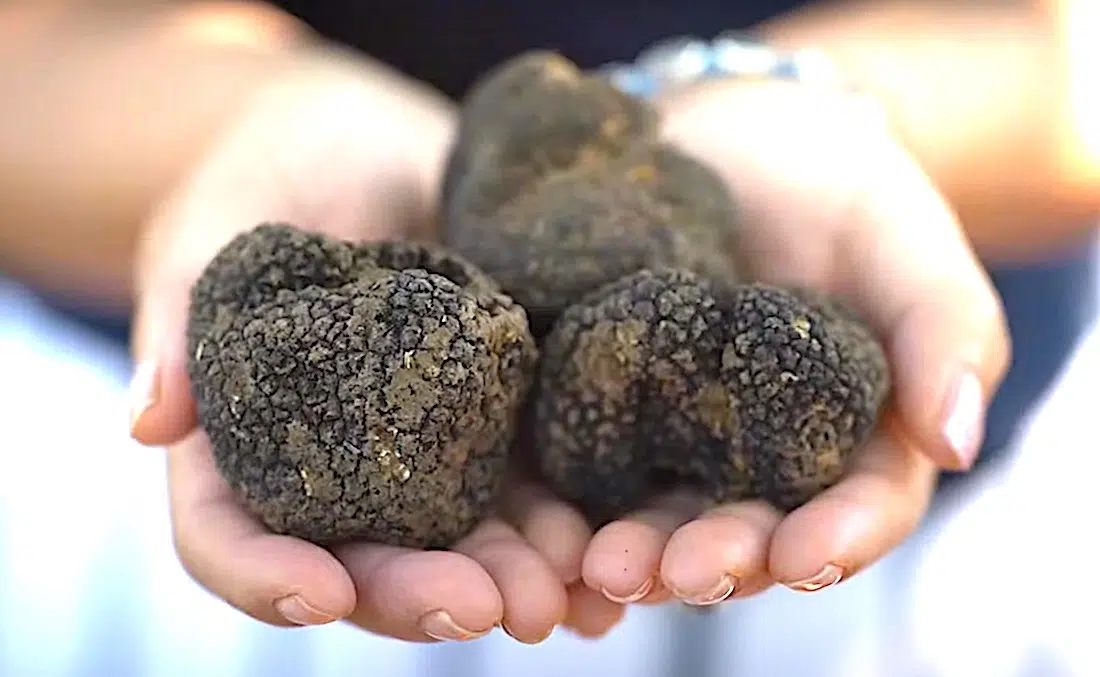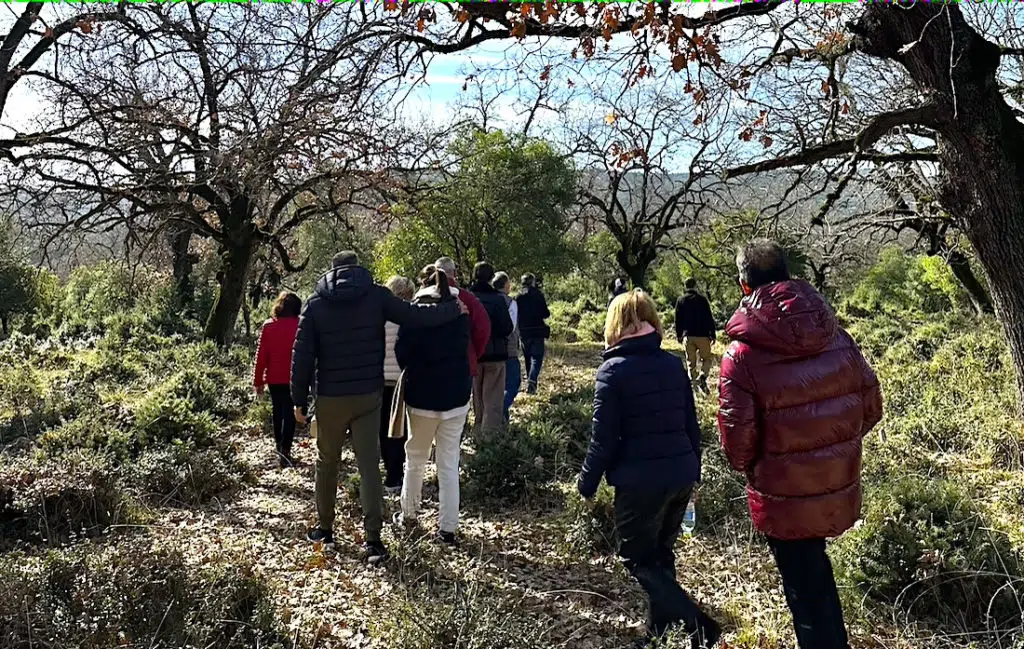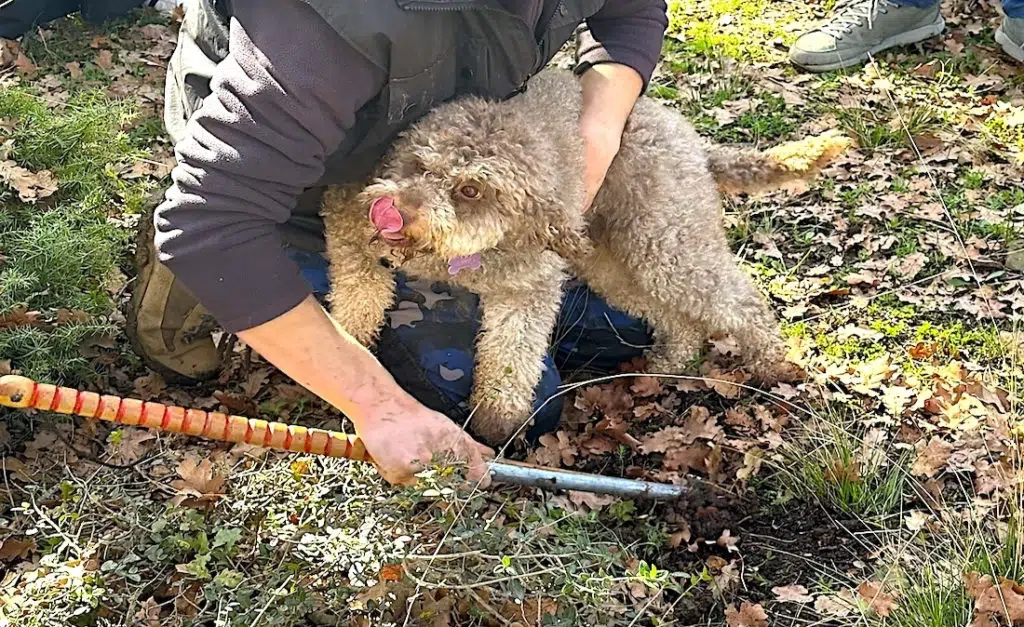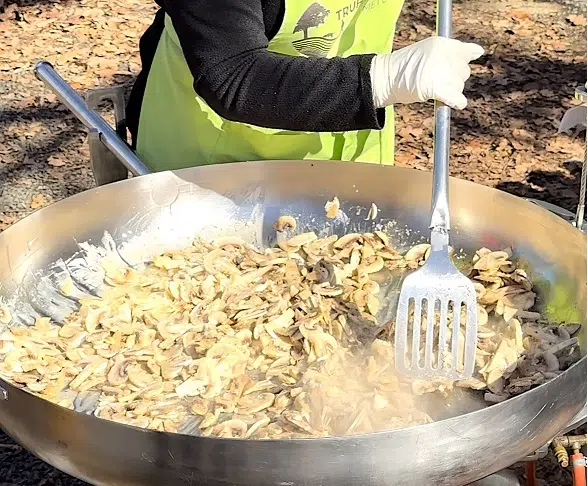
The truffle in ancient Greece was called “Hydnon.” Philosophers, historians, and travelers have praised the rare mushroom with the high nutritional value, aphrodisiac properties, and delicate taste.
Plutarch, Pliny, Cicero, Dioscorides, Theophrastus, Galen, and Athenaeus often mentioned the hydnon (plural hydna) in their writings.
Recent historiographical sources indicate the Babylonians, and, subsequently, the Sumerians were the first to enjoy the earthy delicacy. We can infer that the discovery of truffle and its use on the table dates to the year 3,000 BC.
The first written mention of truffles is made by Theophrastus in the 4th century BC. He wrote about truffles grown in Ilia, Thrace, Mytilene, Samos, and other places across ancient Greece.
Ancient Greek philosophers pondered on the origins of this delicate fungus that grows underground. Mythology has Zeus launching one of his powerful thunderbolts down to earth. The heat of the thunderbolt, along with the natural moisture in the ground, led to the production of the subterranean fungus near an oak tree.
In classical times, Plutarch, Cicero, and Dioscorides, in trying to interpret the inexplicable presence of truffles underground specifically found on the roots of trees, considered them to be the result of lightning falling on the earth.
Latin scholar Pliny the Elder (23-79 AD) in his book Historie Naturalis described the tuber, as truffles were called at the time, as a miraculous product of nature that sprouted and grew without roots. Athenaeus (170-223 AD) in his book Deipnosophists, considered the first cookery book, devotes several pages to truffles.
Ancient Athenians appreciated the truffle to the point of granting honorary citizenship on a certain Cherippo for having invented new and tasty recipes based on the underground ingredient.
Greek philosopher Porphyry (234-305 AD) called truffles “the children of the gods” and Cicero (106-43 BC)”daughters of the earth.” Nero valued them as “food of the gods.”
What exactly are truffles?
Growing underground, truffles are mushrooms ,and, like all fungi, they do not have basic vegetative organs such as roots, stem, and seeds in the botanical sense of the term, as is the case with phanerogamous – spermatophytes.
Dioskouridis and Theophrastus, as botanists, gave the description of truffles with wonderful precision and brevity. “The hydno is a round root without leaves, without a stem, yellowish, which is uprooted in the spring. It is edible and can be eaten raw or cooked,” Dioskouridis wrote.
According to Theophrastus, “The hydno has neither stem, nor branch, nor twig, nor leaf, nor flower, nor fruit, nor skin or heart wood or fibers or vessels.” The origin of the fungus remained unexplained for quite a long time, and botanists faced many difficulties until they determined the true nature of these mushrooms.
The apparent absence of any kind of reproductive organ has been the main obstacle to explaining their manner of reproduction and gives the impression that truffles are randomly created on earth. The spores of mushrooms, in general, in contrast to the seeds of flowering plants, are microscopic and invisible to the naked eye, and the world was almost oblivious to their existence before the microscope was discovered.
Truffles, like all other mushrooms, multiply with spores, which are produced in special ascomorphic reproductive organs and are almost always dispersed on the earth by natural factors, such as wind and water. One cannot help but admire the perspicacity of our ancestors, who, despite the level of scientific research of that time, correctly supported the origin of truffles from seeds.
Truffles are macroscopically distinguished by the coloring and morphology of their skin, which is smooth or rough, and white, tan, or black in color.

Truffle hunting in Meteora
Today, truffles are found in many gourmet tables across Greece. Truffle hunting has become a game with delicious culinary rewards. It is also a profit-making enterprise that finds new fans every year.
The Natural History Museum of Meteora and the Mushroom Museum organize the Truffle hunting in Meteora every year. In the beautiful forests of the area, at a very short distance from Kalambaka, visitors can enjoy a unique truffle hunt.
The area of Meteora is ideal for truffle hunting. It has wild truffles, and accessibility is quite easy, as a bus coach may conveniently make its way there. Visitors may partake in truffle hunting either in combination with visiting monasteries and other attractions or as an independent activity.

There is a trained truffle hunter with his truffle dogs, and the search begins immediately in each corner of the forest. Visitors enjoy following the dogs that never stop searching. The animals find the truffles and hunters take them to the chefs. The rest belongs to the chefs who start cooking the famous truffle pasta.
Chefs tell the secret of how to make pasta with truffles and offer hunters different kinds of wild mushrooms for tasting. Bottles of wine are opened and hunters enjoy a great meal of new flavors.

The Mushroom Museum
What follows is the visit to the Mushroom Museum. It is a tour of various types of mushrooms focusing on the nutritional and therapeutic value of each fungus. Finally, visitors may choose from seventy traditional kinds of mushroom and truffle products.
The whole program takes about three hours and is available at all hours of the day. Visitors may join either in groups of up to fifty people or private groups of up to ten. School groups may attend at a reduced price.
The hunting season runs from March until the end of October. Off season visits can be arranged after negotiation.
For further information, those interested in learning more may consult the website or get in touch through email or by phone as detailed below.
Websites: www.meteoramuseum.gr, www.trufflehunting.net Emails: info@meteoramuseum.gr, info@trufflehunting.net Phone: (+30) 24320 24959
See all the latest news from Greece and the world at Greekreporter.com. Contact our newsroom to report an update or send your story, photos and videos. Follow GR on Google News and subscribe here to our daily email!



